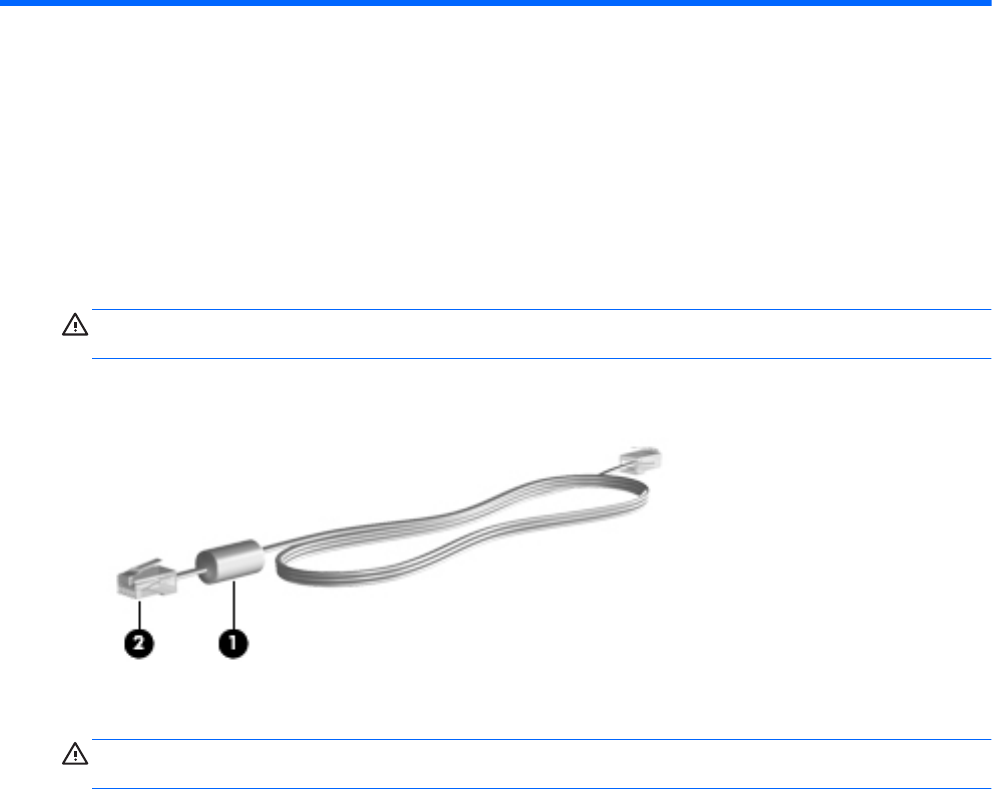Reference Guide
Table Of Contents
- Notebook tour
- HP Write Filters
- Configuration
- Applications
- Pointing devices and keyboard
- Using pointing devices
- Using the keyboard
- Using hotkeys
- Displaying system information
- Decreasing screen brightness
- Increasing screen brightness
- Switching the screen image
- Muting speaker sound
- Decreasing speaker sound
- Increasing speaker sound
- Playing the previous track or section of an audio CD or a DVD
- Playing, pausing, or resuming an audio CD or a DVD
- Playing the next track or section of an audio CD or a DVD
- Using hotkeys
- Using the keypads
- Power
- Power control and light locations
- Shutting down the computer
- Setting power options
- Using battery power
- Using external AC power
- Multimedia
- Wireless
- Modem and LAN
- Security
- Connecting hardware
- Using Media Card Reader cards
- Using ExpressCards
- Hardware upgrades
- MultiBoot
- Computer Setup
- Routine care
- Index

9 Modem and LAN
Using a modem
The modem must be connected to an analog telephone line by using a 6-pin, RJ-11 modem cable
(purchased separately). In some countries or regions, a specific modem cable adapter is also
required. Jacks for digital PBX systems may resemble analog telephone jacks, but they are not
compatible with the modem.
WARNING! Connecting the internal analog modem to a digital line can permanently damage the
modem. Immediately disconnect the modem cable if you accidentally connect it to a digital line.
If the modem cable contains noise suppression circuitry (1), which prevents interference from TV and
radio reception, orient the circuitry end (2) of the cable toward the computer.
Connecting a modem cable
WARNING! To reduce the risk of electric shock, fire, or damage to the equipment, do not plug a
modem or telephone cable into the RJ-45 (network) jack.
To connect a modem cable, follow these steps:
1. Connect the modem cable into the modem jack (1) on the computer.
42 Chapter 9 Modem and LAN










